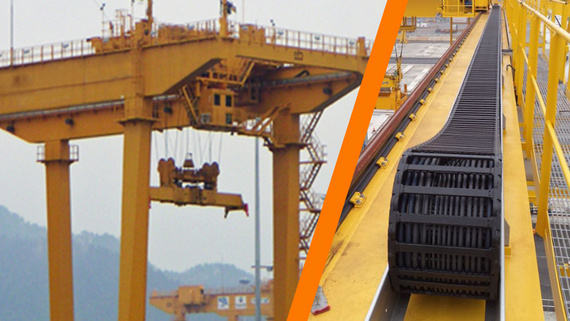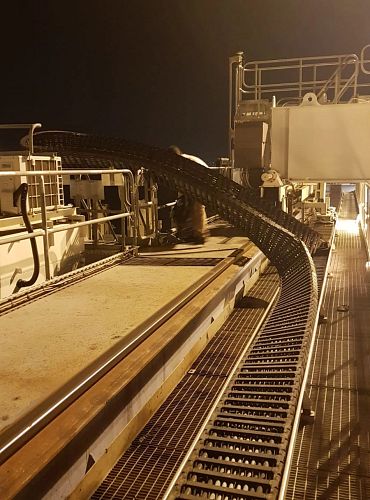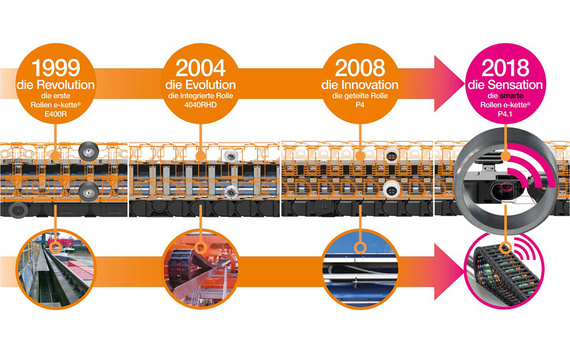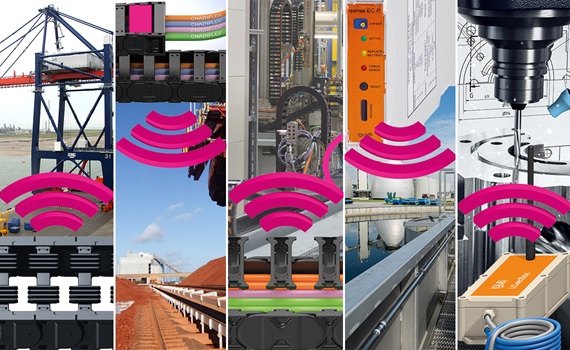Condition monitoring for energy chains on RMG cranes saves lots of downtime costs
Israeli port operator HPC relies 100% on modern condition monitoring with i.Sense
Haifa is Israel's leading port. Almost 30 million tons of cargo are handled there every year. Thanks to the continuous efforts of our customer, Haifa Port Company (HPC), it is also the most efficient port in Israel. It meets the highest world standards and has capabilities recognized by the OECD. This also includes a comprehensive monitoring system for all RMG cranes used.
Profile
- What was needed: 4040HD energy chains, chainflex® cables, i.Sense condition monitoring
- Requirements: Intelligent early warning system to prevent failures and reduce maintenance costs
- Industry: Ports - cranes - RMG cranes
- Success for the customer: Extension of service intervals and thus significant reduction of both costs and the risk of failure

Problem
The port – a harsh, salty environment with high machine duty cycles, and no place for unexpected system downtime. Heavy loads, long periods of use, and a wide variety of weather conditions – cranes in port facilities must perform at their best. Ensuring this at all times requires reliable crane cable guidance systems and condition monitoring concepts.
Maintenance and servicing for current crane systems and crane cable guidance systems are growing not only in size, but also in control complexity. HPC currently replaces the energy chains supplying energy in the port every seven years, no matter what. While this creates a certain sense of security, it also means immense recurring costs.
To load and unload the cutting-edge Triple E-class container ships, larger STS cranes must be built or existing cranes retrofitted. Container crane availability and dependability requirements are also increasing. This affects energy supply system design and selection. For future operations, in addition to using rol e-chains®, there is much to recommend self-monitoring systems fitted with sensors.
Solution
The main arguments for i.Sense condition monitoring on the crane are maximum safety and reliability for the energy supply system. Shutdowns should not happen at all, or eliminating them should at least require little effort. This is precisely where condition monitoring systems have their strengths and raison d'être. Each i.Sense system has its own advantages:
- i.Sense EC.P system: Push or pull force increase due to insufficient travel is detected in time and expensive consequential or total damage prevented.
- i.Sense EC.B system: Protection against damage resulting from chain breakage with minimum maintenance costs
- i.Sense CF.P System: No abrasion of the cables in the e-chain's inner radius due to incorrect adjustment
Mr Itzik Simana, Haifa Port Company



